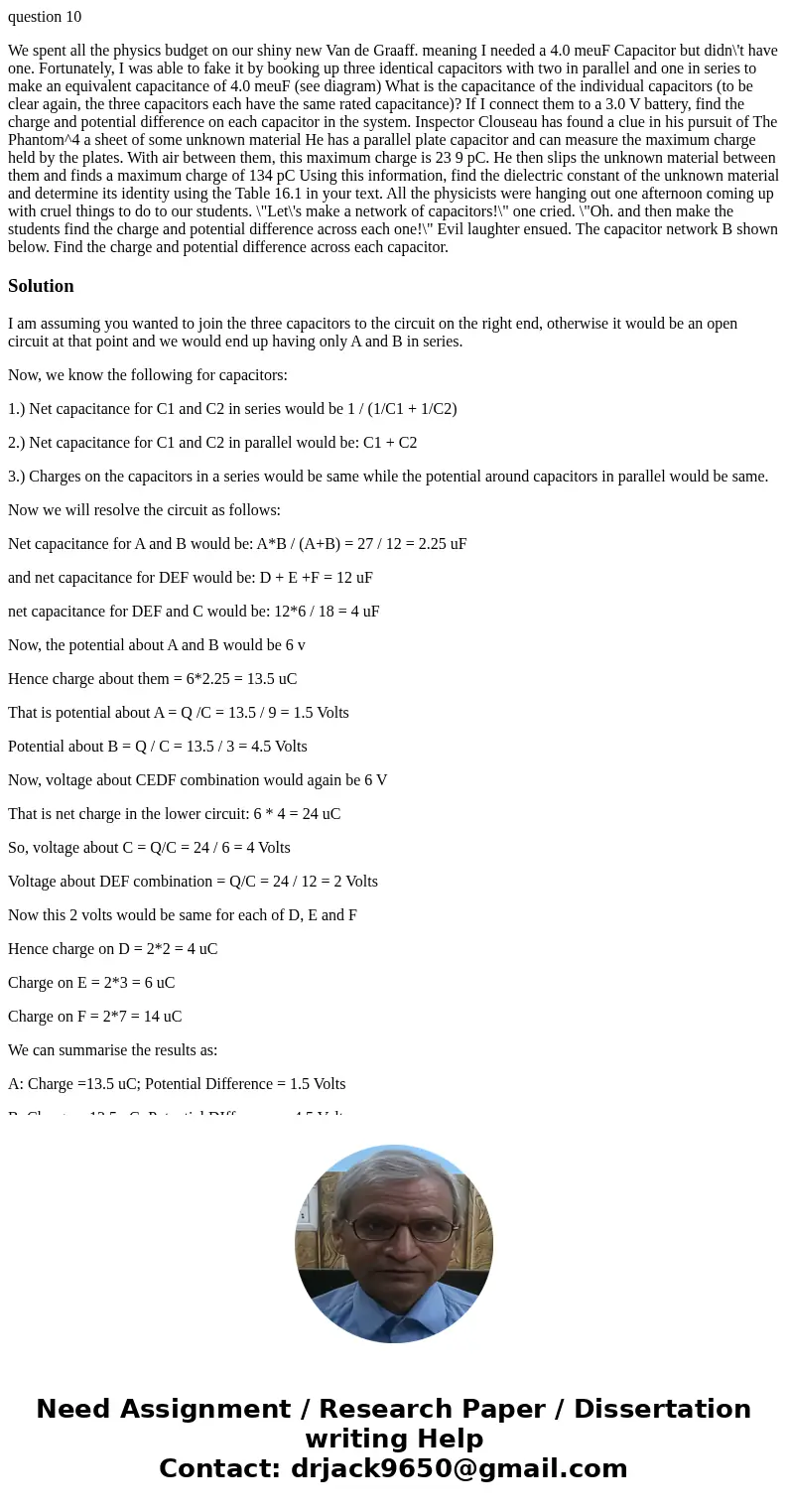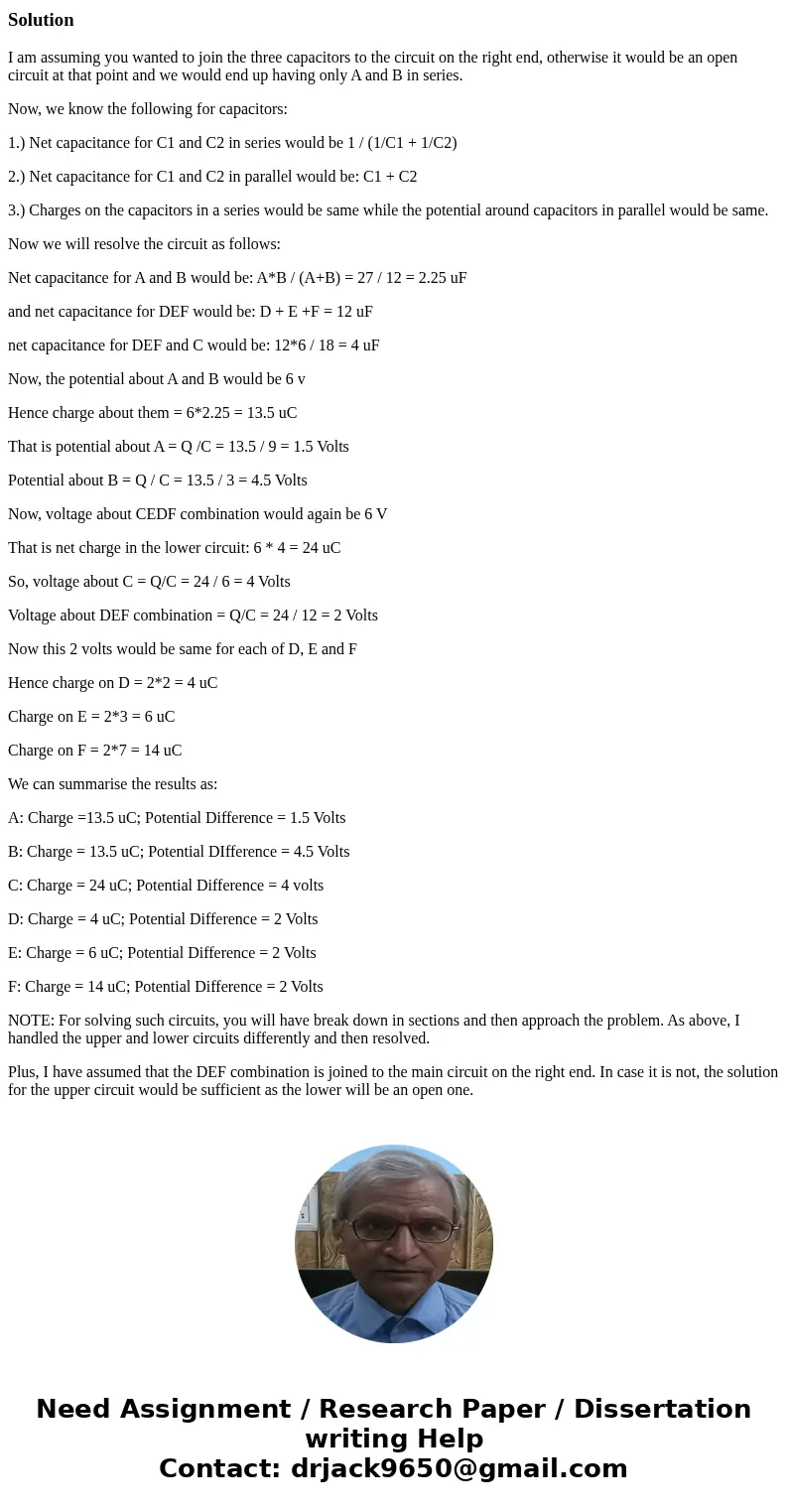question 10 We spent all the physics budget on our shiny new
question 10
We spent all the physics budget on our shiny new Van de Graaff. meaning I needed a 4.0 meuF Capacitor but didn\'t have one. Fortunately, I was able to fake it by booking up three identical capacitors with two in parallel and one in series to make an equivalent capacitance of 4.0 meuF (see diagram) What is the capacitance of the individual capacitors (to be clear again, the three capacitors each have the same rated capacitance)? If I connect them to a 3.0 V battery, find the charge and potential difference on each capacitor in the system. Inspector Clouseau has found a clue in his pursuit of The Phantom^4 a sheet of some unknown material He has a parallel plate capacitor and can measure the maximum charge held by the plates. With air between them, this maximum charge is 23 9 pC. He then slips the unknown material between them and finds a maximum charge of 134 pC Using this information, find the dielectric constant of the unknown material and determine its identity using the Table 16.1 in your text. All the physicists were hanging out one afternoon coming up with cruel things to do to our students. \"Let\'s make a network of capacitors!\" one cried. \"Oh. and then make the students find the charge and potential difference across each one!\" Evil laughter ensued. The capacitor network B shown below. Find the charge and potential difference across each capacitor.Solution
I am assuming you wanted to join the three capacitors to the circuit on the right end, otherwise it would be an open circuit at that point and we would end up having only A and B in series.
Now, we know the following for capacitors:
1.) Net capacitance for C1 and C2 in series would be 1 / (1/C1 + 1/C2)
2.) Net capacitance for C1 and C2 in parallel would be: C1 + C2
3.) Charges on the capacitors in a series would be same while the potential around capacitors in parallel would be same.
Now we will resolve the circuit as follows:
Net capacitance for A and B would be: A*B / (A+B) = 27 / 12 = 2.25 uF
and net capacitance for DEF would be: D + E +F = 12 uF
net capacitance for DEF and C would be: 12*6 / 18 = 4 uF
Now, the potential about A and B would be 6 v
Hence charge about them = 6*2.25 = 13.5 uC
That is potential about A = Q /C = 13.5 / 9 = 1.5 Volts
Potential about B = Q / C = 13.5 / 3 = 4.5 Volts
Now, voltage about CEDF combination would again be 6 V
That is net charge in the lower circuit: 6 * 4 = 24 uC
So, voltage about C = Q/C = 24 / 6 = 4 Volts
Voltage about DEF combination = Q/C = 24 / 12 = 2 Volts
Now this 2 volts would be same for each of D, E and F
Hence charge on D = 2*2 = 4 uC
Charge on E = 2*3 = 6 uC
Charge on F = 2*7 = 14 uC
We can summarise the results as:
A: Charge =13.5 uC; Potential Difference = 1.5 Volts
B: Charge = 13.5 uC; Potential DIfference = 4.5 Volts
C: Charge = 24 uC; Potential Difference = 4 volts
D: Charge = 4 uC; Potential Difference = 2 Volts
E: Charge = 6 uC; Potential Difference = 2 Volts
F: Charge = 14 uC; Potential Difference = 2 Volts
NOTE: For solving such circuits, you will have break down in sections and then approach the problem. As above, I handled the upper and lower circuits differently and then resolved.
Plus, I have assumed that the DEF combination is joined to the main circuit on the right end. In case it is not, the solution for the upper circuit would be sufficient as the lower will be an open one.


 Homework Sourse
Homework Sourse